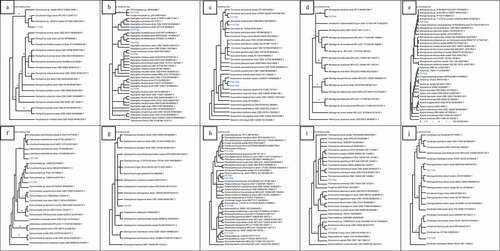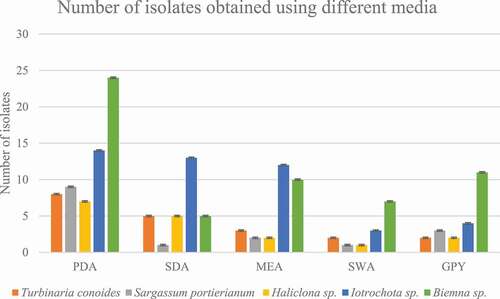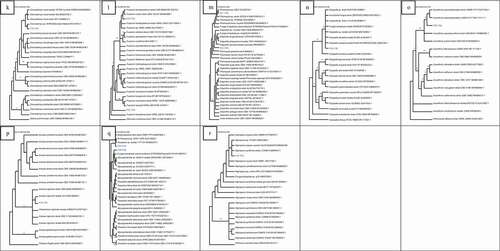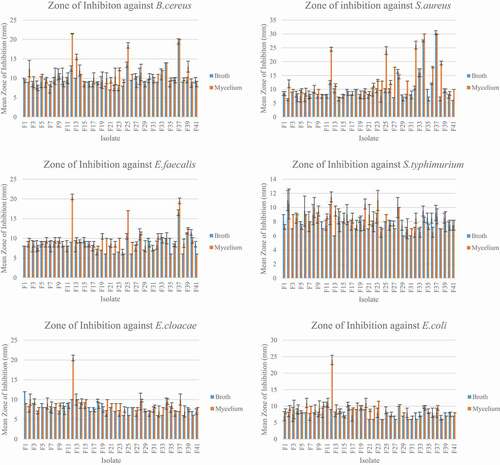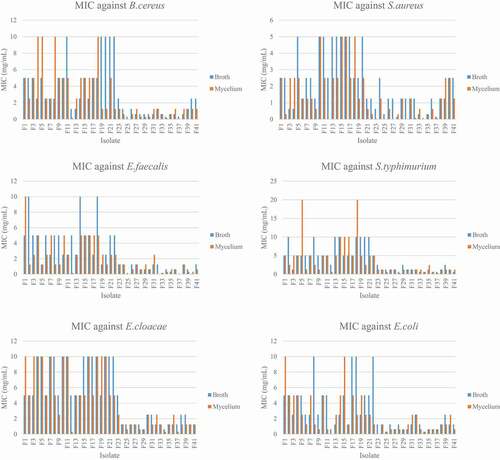Figures & data
Table 1. BLAST result search of the selected marine fungi
Figure 2. Neighbour-joining trees showing the relationships of isolates with members of their family based on ITS rDNA sequence. (a) Isolate F1 with members of Peniophoraceae. (b) Isolates F2, F25, F29, F34, F37 with members of Trichomaceae. (c) Isolates F3, F13, F30, F33 with members of Pleosporacea. (d) Isolate F4 with members of Montagnulaceae. (e)Isolates F6, F28 with members of Xylariaceae. (f) Isolates F7, F31 with members of “Incertae sedis”. (g) Isolate F8 with members of Davidiellaceae. (h) Isolates F9, F10, F15, F17, F23 with members of Didymosphaeriaceae. (i) Isolates F12, F14 with members of Hypocreaceae. (j) Isolates F16, F27 with members of Cordypitheaceae. (k) Isolates F19 with members of Bionectriaceae. (l) Isolates F20, F22 with members Nectriaceae. (m) Isolates F21, F35 with members Diapothaceae. (n) Isolate F24 with members Diatrypaceae. (o) Isolate F26 with members Onygenaceae. (p)Isolate F39 with members of Chaetomiceae. (q) Isolates F38, F40 with members of Mycosphaerellaceae. (r) Isolate F36 with members Apiosporaceae
